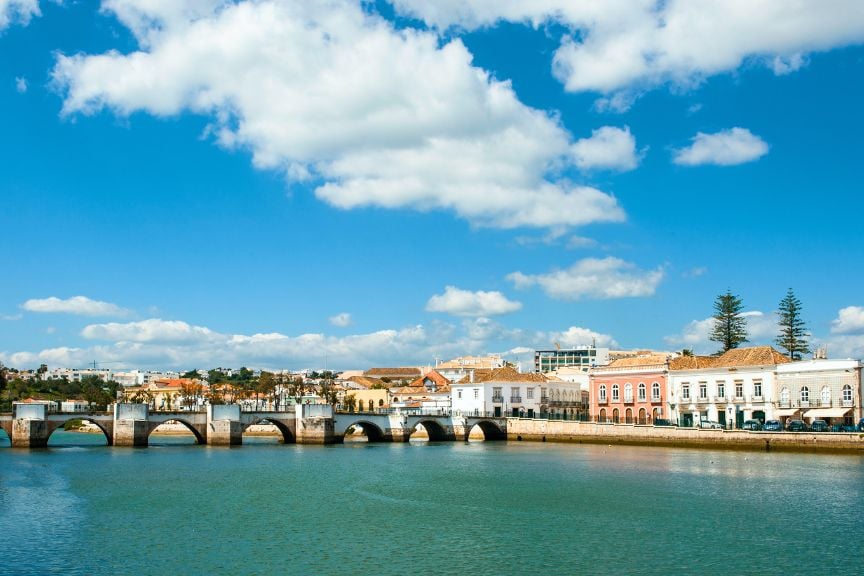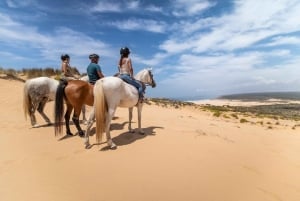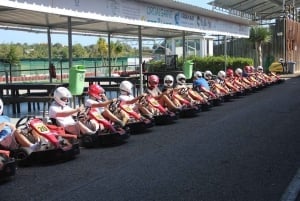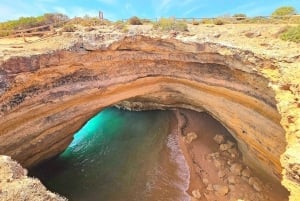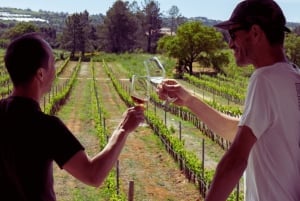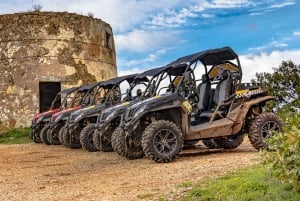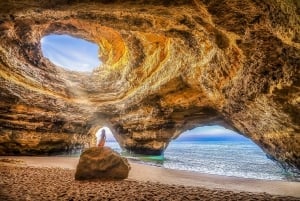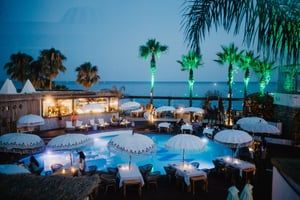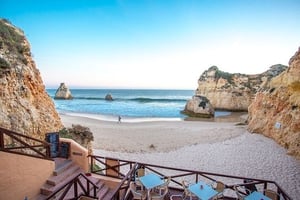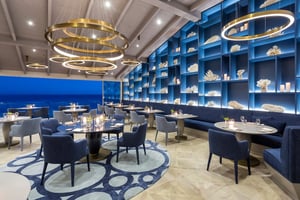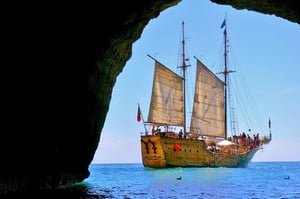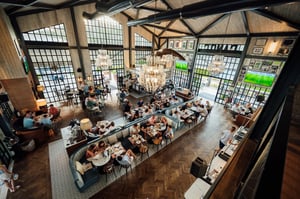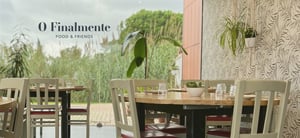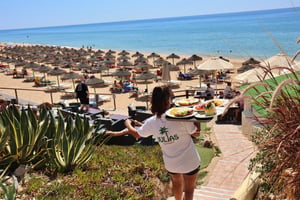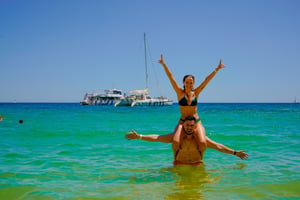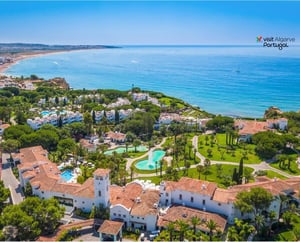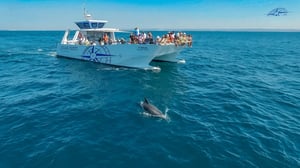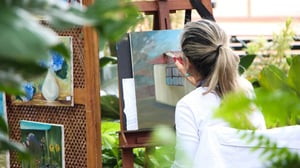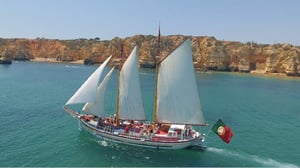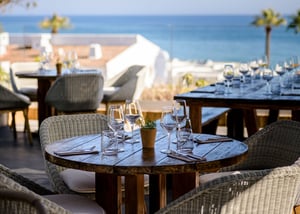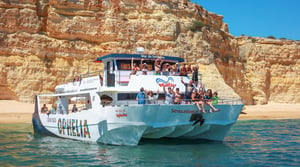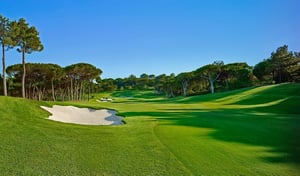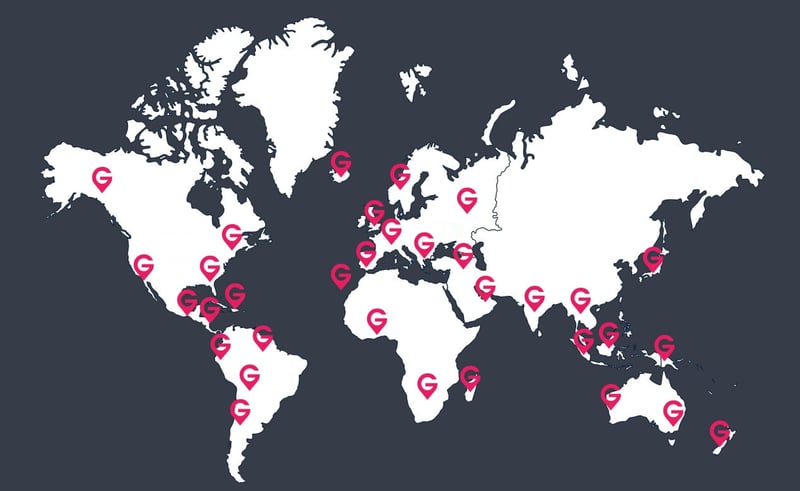Algarve 5 Day Scenic Road Trip Itinerary
Plan your trip with our complete guide!
Book Top Experiences and Tours in Algarve:
If youʻre booking your trip to Algarve last minute, we have you covered. Below are some of the top tours and experiences!- Cabanas de Tavira: Dolphin Watching Boat Tour
- Algarve: 1-Hour Carrapateira Horseback Riding Tour
- Algarve: Go-Kart Experience at Karting Almancil Family Park
- From Faro: The Original Benagil Cave, Marinha & More Tour
- Faro: Ria Formosa Natural Park Segway Tour & Birdwatching
In the article below you will find:
- Day by day itineraries from Sagres to Tavira
- Tips on where to park
- Information on hiring a car in Portugal and what you need to know
- Promo Code for a discount on car hire
- Do's and Don'ts of driving in Portugal
Expect golden beaches, historic towns, seafood feasts, and epic sunsets, with hand-picked stops that include must-see sights, hidden gems, and recommended experiences. Let’s drive!
Need car hire? Go local and book your car hire with Auto Rent. A family run Algarve business, with a modern fleet, competitive rates and great, on-the-ground service.
Plus, you get a discount when you use the Promo Code - 5% off daily rates on bookings with a total value over €90
- Book car hire with Auto Rent
- Promo Code: MYGUIDEALG
DAY 1: SAGRES & THE COSTA VICENTINA
Start your adventure in Sagres, a laid-back surf town with rugged Atlantic charm. This is the Algarve at its most elemental and windswept. The Atlantic is a constant presence here, from the sea scented breeze to the sounds of the waves crashing against the cliffs. Outdoor activities reign supreme – surfing and sailing, hiking, horse riding, bird-watching. There are some excellent eateries here, offering everything from traditional Portuguese cuisine, seafood directly from sea to plate, and a host of vegan and vegetarian options.
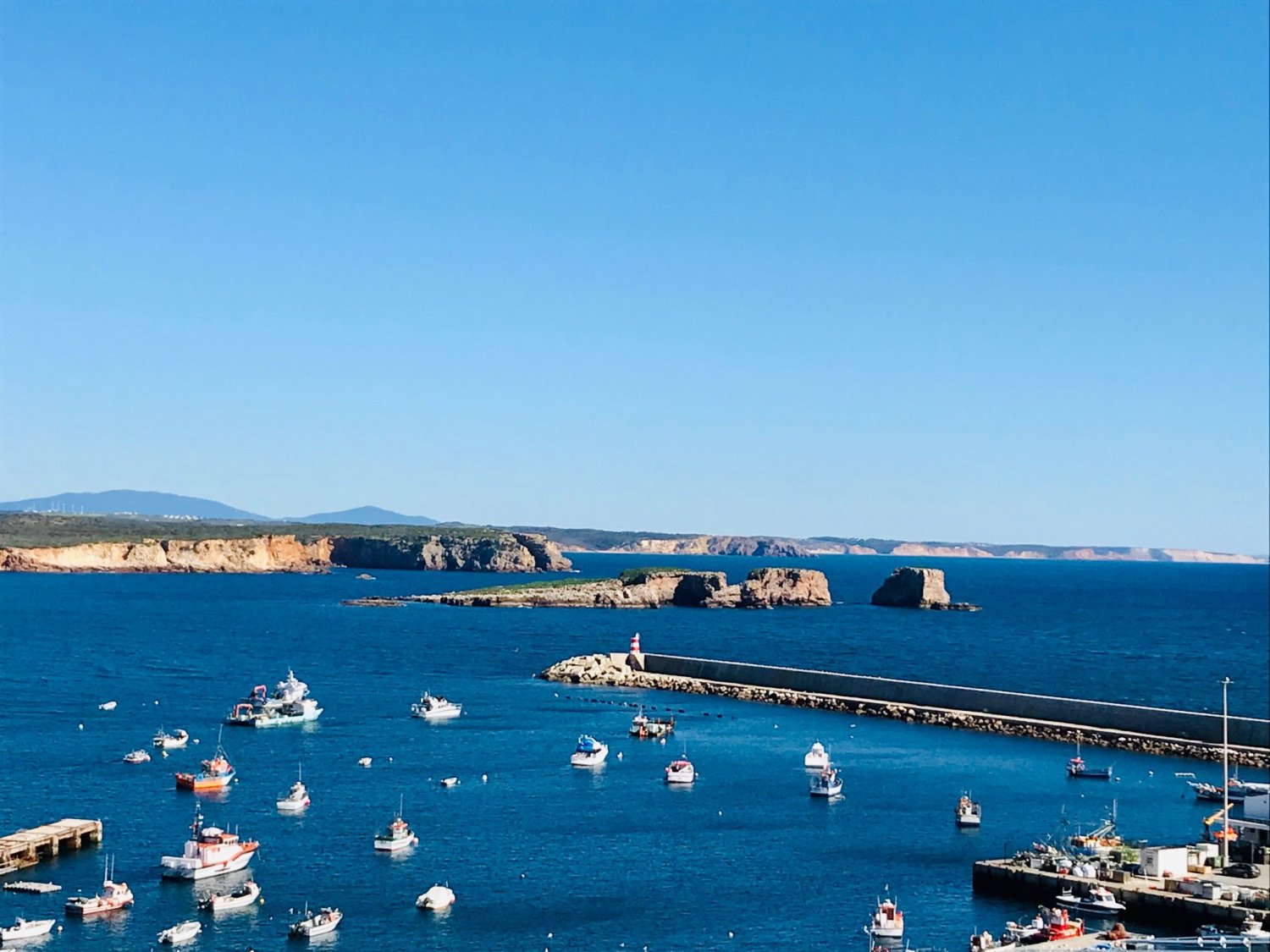
Must-See: Visit the Fortaleza de Sagres, perched dramatically above the sea, and the nearby Cabo de São Vicente, Europe’s southwesternmost point. Sunset here is legendary. The 5 km drive from one spot to the other is made up of dramatic coast and cliff-top views. The headland juts out into the ocean, meaning you have amazing cliff views on both sides.
From Sagres harbour, or better yet, from a sunny terrace above the harbour, you have pretty views across the sea to the Ilhotes de Martinhal.
Experience: Try a surf lesson. Martinhal, Tonel, Mareta and Zavial beaches are all good for surfing and there are surf schools located in Sagres town. The Algarve has super surf spots all along the coast. Or simply enjoy cliff-top walks with magnificent views.
Eat & Drink: Enjoy fresh seafood and traditional Portuguese food with front-row views of the ocean and surfers at O Telheiro do Infante.
Stay: Choose a sea-view suite at Memmo Baleeira Hotel, perfect for design-conscious travellers. Families will love the Martinhal resort while more independent travellers may prefer the various surf hostels and apartments in Sagres.
Stay longer: add some extra time to your trip in order to explore the magnificent Costa Vicentina natural park. Worthy of more than just a quick visit, this is a protected area of immense natural beauty. Take a look at Cordoama, Carrapateira and Bordeira, or right up to the northern tip of the Algarve, at Odeceixe. Then plan to come back and spend more time here on your next visit.
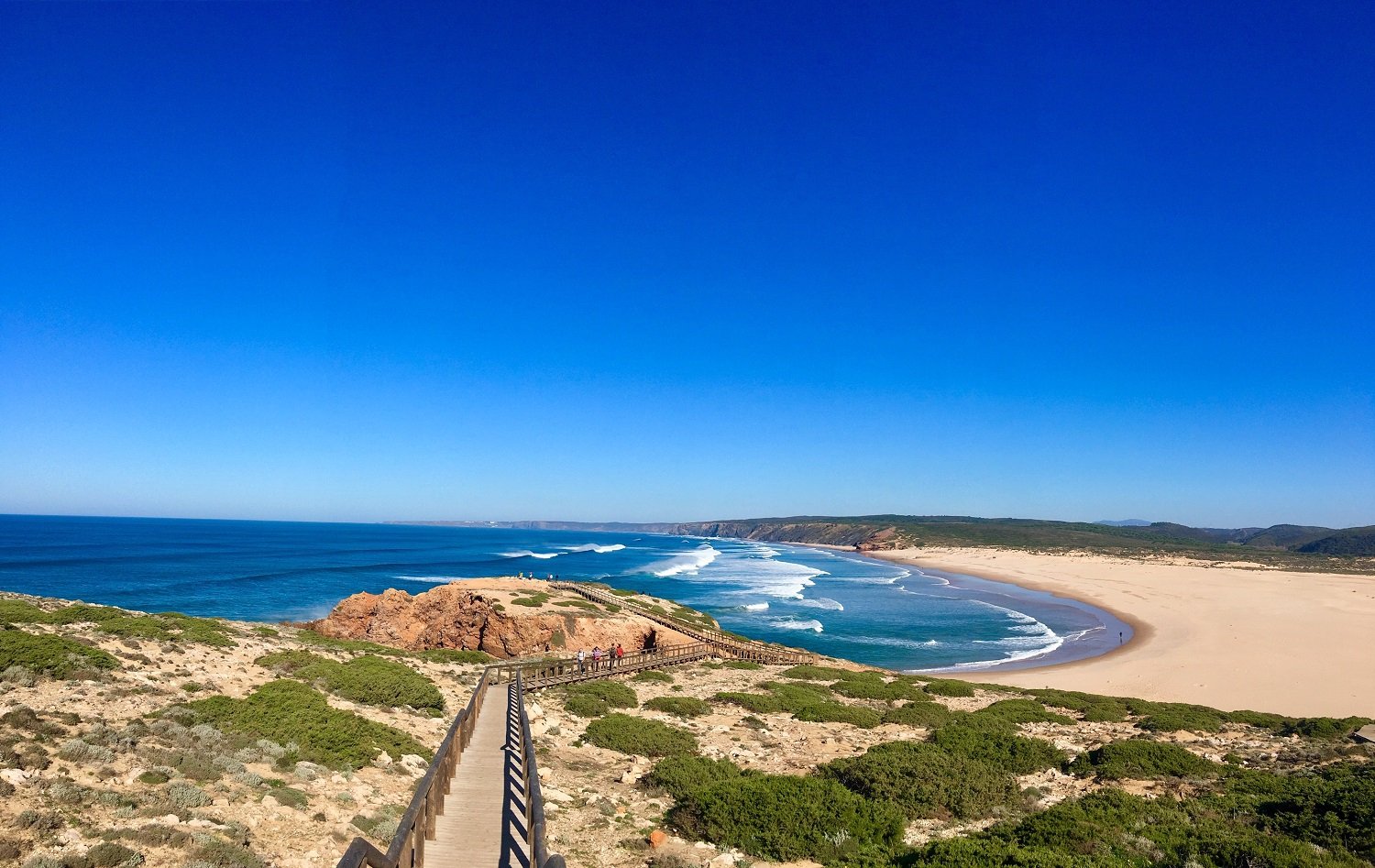
Driving Tips
The N628 is the road giving access to Sagres. At Vila do Bispo, it connects with the EN125 which runs west to east across the Algarve. This in turn connects with the A22 highway, which begins (in the western Algarve) just north of Lagos.
To explore the Costa Vicentina from Sagres, take the N628 from Sagres to Vila do Bispo, and stay on the road, heading north, and taking the small country roads westward to the beaches and coast.
Next stop: Lagos, a historic town framed by ochre cliffs and turquoise seas. This is one of the Algarve’s most iconic destinations, an ancient town with a buzzing, cosmopolitan vibe. Locals, residents of many nationalities, remote workers and tourists all mingle and enjoy the towns many charms.
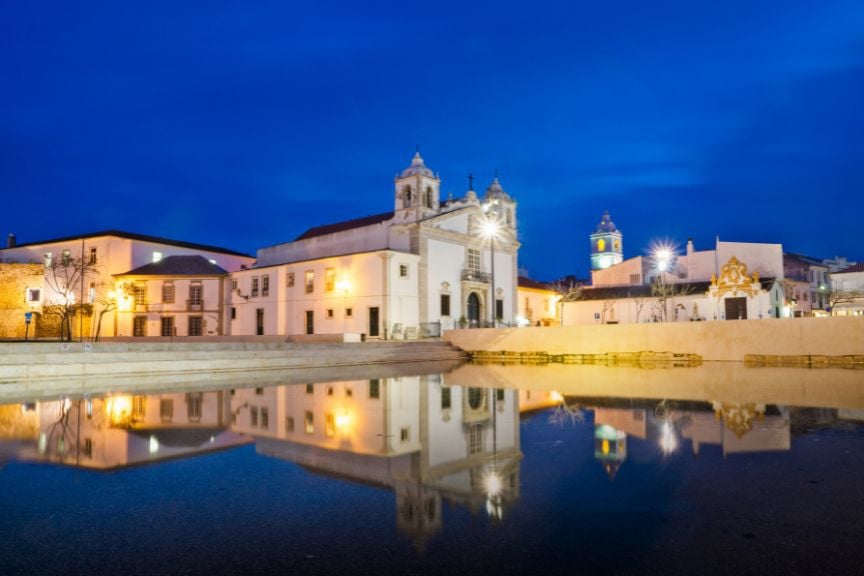
Explore: Ditch the car and wander through the old cobbled streets within the town walls. Visit the Golden Chapel and the town museum.
Relax for a while at Mar Restaurant which has the most magnificent views of the bay, looking across to Alvor and Portimão, and further east towards Ferragudo.
Photo Spots: Then take the steps down to beach and take some photos at Instagram favourite Praia dos Estudantes.
Or follow the cliff-top walkways from the town to Ponta da Piedade, an incredibly beautiful natural landscape of cliffs, coves and caves. The paths take you by Praia do Camilo – another online star.
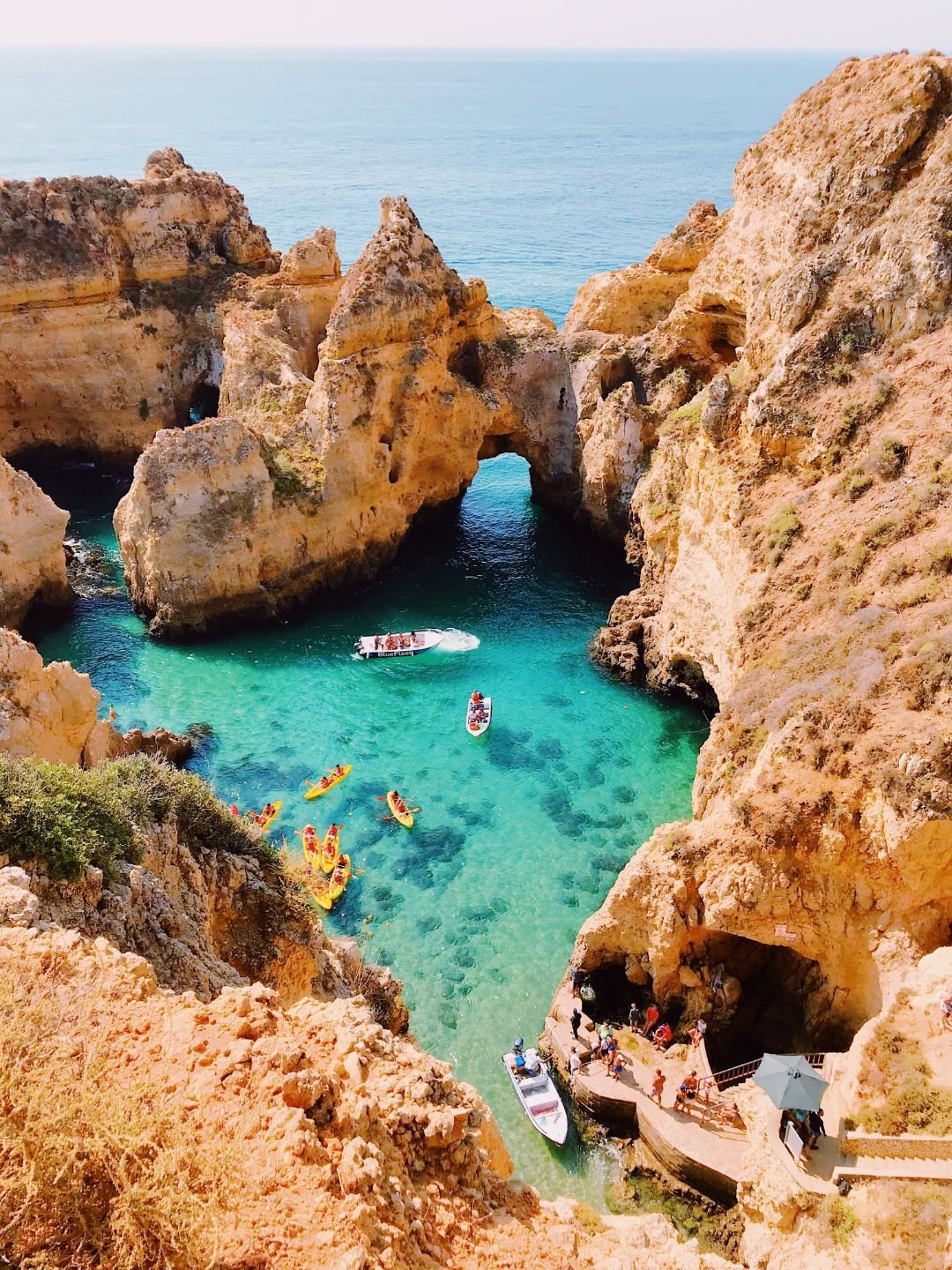
Boat Tour: A must-do in Lagos! Head to the marina and embark on a sea adventure. You can explore Ponta da Piedade from the sea (the best way).
Join Bom Dia Boat Trips on their traditional sailing boats, or head out to sea with a Seatrips dolphin watching tour.
Hotels in Lagos - the town offers everything from lively hostels to beautiful boutique hotels with gourmet dining.
Driving Tips
Distance from Sagres to Lagos: 32kms. If you have time, take a more scenic route along the coast, through Burgau and Praia da Luz on the M537.
You can also drive from town to Ponta da Piedade (there is parking) and then explore the walkways.
Parking in Lagos can be a challenge. Try along the main avenue, or in the municipal underground car parks (paid). There is a spacious car park by the marina (free).
DAY 3: SILVES & MONCHIQUE - HISTORY & HILLS
Time to head inland and discover a different Algarve.
Silves, once the Moorish capital of the region, is a town of red-stone walls and cobbled streets, overlooked from on high by the picturesque castle. Here, history is everywhere, from the cobblestone pavements worn smooth and slippery by use over hundreds of years, to the impressive gothic cathedral and fascinating museum, and the pretty roman bridge that crosses the River Arade, once the main route from the Portimão on the coast to Silves.
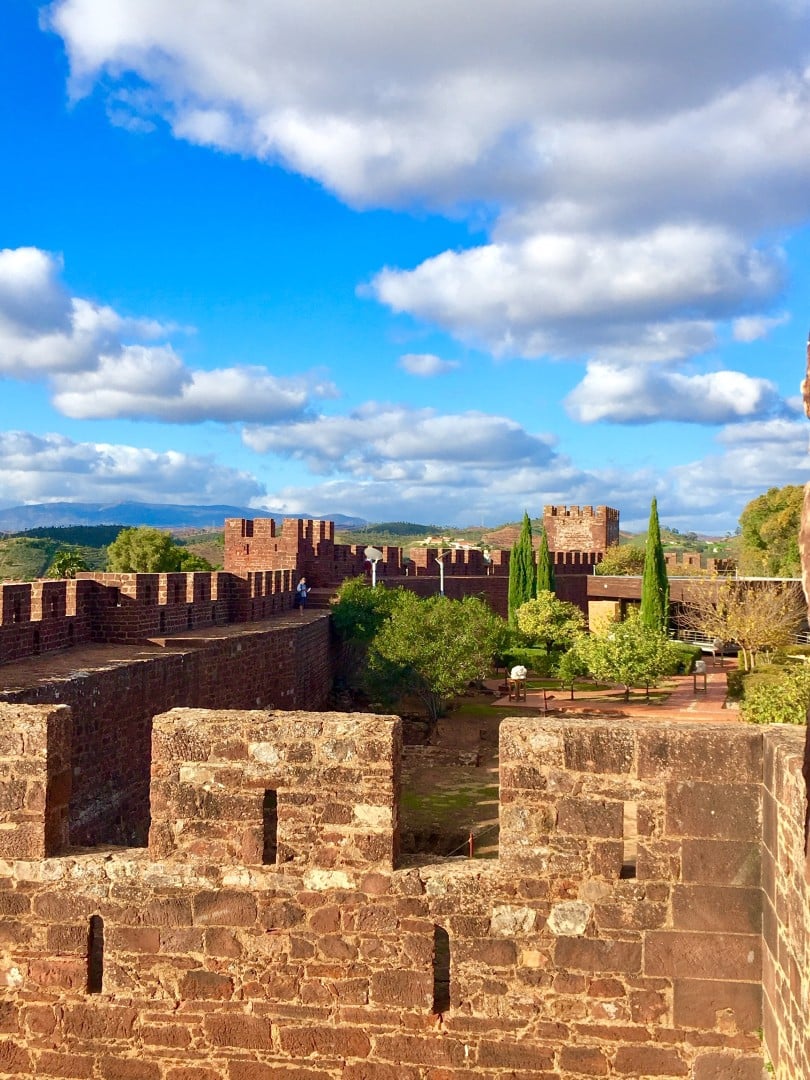
Cultural Stop: Explore Silves Castle and Gothic cathedral, then wander through the pretty streets.
Eat: Stop for a drink or a meal at Café Ingles which nestles by the cathedral walls and beneath the castle.
Experience: a live Fado concert at O Cais restaurant. Haunting and intrinsically Portuguese, the ancient town of Silves is the perfect setting for this music.
Don’t miss: If you’re in the Algarve in August, don’t miss the Silves Medieval Fair – the annual celebration of Silves history with daily parades, knights, troubadours and jousting!
Travel by water: you can travel to Silves by boat, sailing along the River Arade, as people have done for hundreds of years. The boats depart from Portimão or Ferragudo, times vary depending on the tides
Monchique
From Silves drive to Monchique, a lush and winding drive. Keep an eye out for the stork colonies that nest alongside the road, and for the cork trees, whose precious bark is used by NASA and Moet Chandon.
Take in the waters: On the way you pass Caldas de Monchique. Stop to admire the lush and leafy square, to see some handcrafts or to spend some time at the Thermal Spa. Monchique water is known for its high alkaline content with a ph of 9.5. (There are hotels in Caldas de Mocnhqiue, however spa is closed for renovations early 2025).
As you continue to Monchique, you gradually climb above the coast and each curve in the road offers fabulous sweeping views down to the sea.
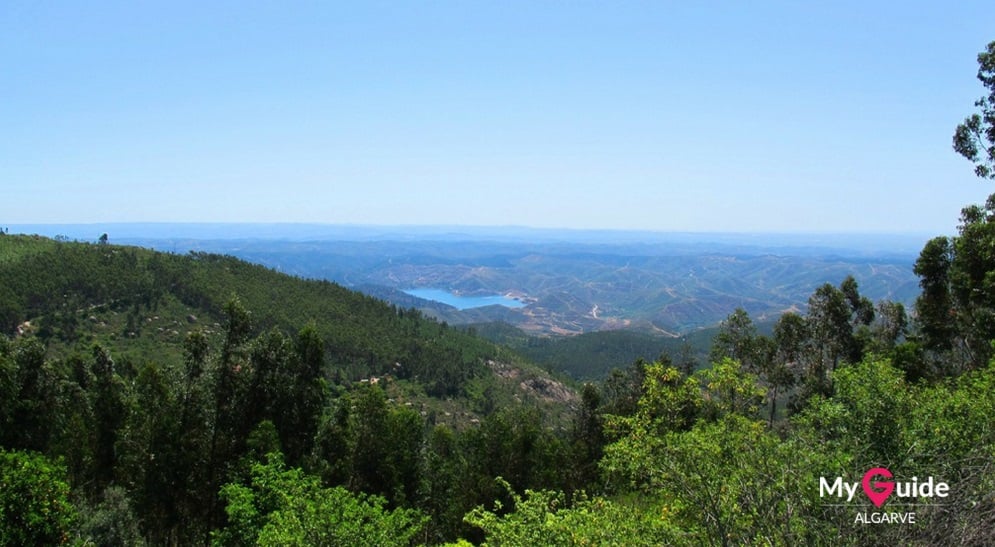
Eat: The town of Monchique is a market town with several artisanal shops and restaurants serving hearty Portuguese cuisine. Try A Charette in the town centre, a family run restaurant with old-world charm and delicious traditional dishes.
Stroll the town’s narrow streets before continuing to drive upwards to Foía, the highest point in the Algarve at 902m.
Take a detour: Head to the village of Alferce (take the ER267 just before Monchique) and walk the Barranco do Demo boardwalk, which crosses a gorge and stream, following the undulating landscape.
Driving Tips
You can drive from the Costa Vicentina and Aljezur town across the countryside on the N267. A pretty, rustic route that will give you a taste of the rural Algarve.
The road from Monchique to Foia is winding – drive carefully.
At Silves, park by the river, near the municipal swimming pool, and walk to the centre. The town’s old streets are hilly and narrow and you may not want to navigate them by car.
Depending on where you are coming from, you can opt to visit Monchique first and then head onto Silves, or vice-versa.
Back to the coast for some city vibes and island escapes. Faro, the Algarve’s capital, is often overlooked—but it shouldn’t be. As you come into land at Faro airport you will often be treated to magnificent views of the coastline – the ochre cliffs and long golden beaches, the white sandbanks, translucent waters, and shimmering lagoons of the Ria Formosa. Many people, once landed at the airport, disperse to points further along the coast. If you can, set aside some time to explore Faro itself, as well as the unique and beautiful Ria Formosa.
Faro is the capital of the Algarve, home to thousands of locals living their lives, rearing their families, and enjoying the bounties of life in the Algarve. It is also home to a thriving university with a growing population of foreign and national students, giving the city a vibrant and cosmopolitan vibe, that complements the deep roots of the local community.
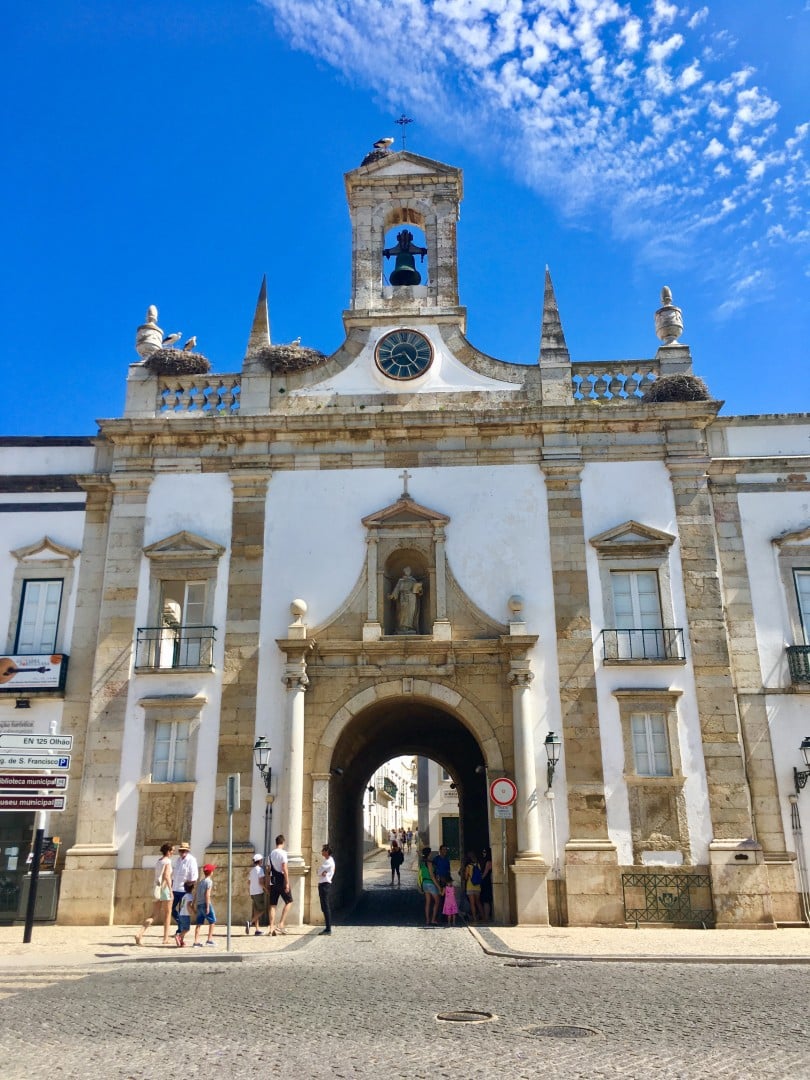
Explore Faro’s Old Town: Park the car and wander the old town on foot. Walk through the beautiful Arco da Vila, but not before looking up to see the storks nesting high above, by the bell tower. Follow the narrow, cobbled streets to the Largo do Sé to see the Cathedral. You can visit the Cathedral and museum, and climb the stairs to the bell tower for stunning views cross the Ria Formosa. There is also a small Capela dos Ossos or Bone chapel here, and a larger one at the Carmo Church (further for the centre).
For an immersive, multimedia dive into Faro’s history, visit Faro Story Spot, by Largo do Sé.
Relax by Faro’s marina, which is right by the Arco da Vila. Enjoy a cold drink in the sunshine, watching the boats come and go.
For relaxation with views climb to the rooftop restaurant and bar at Hotel de Faro and enjoy the truly magnificent views, perfect any time of day, but particularly spectacular at sunset.
For cocktails with added style, visit Columbus bar, by Arco da Vila.
Island Time: From Faro there are several options for boat trips on the Ria Formosa. Go bird-watching, or take an island-hopping tour, visiting Farol, Armona and Culatra islands, traditional fishing communities on traffic-free islands.
Or discover Ilha Deserta, the Desert Island – miles of sand and sea, with only one man-built structure - a superb seafood restaurant.
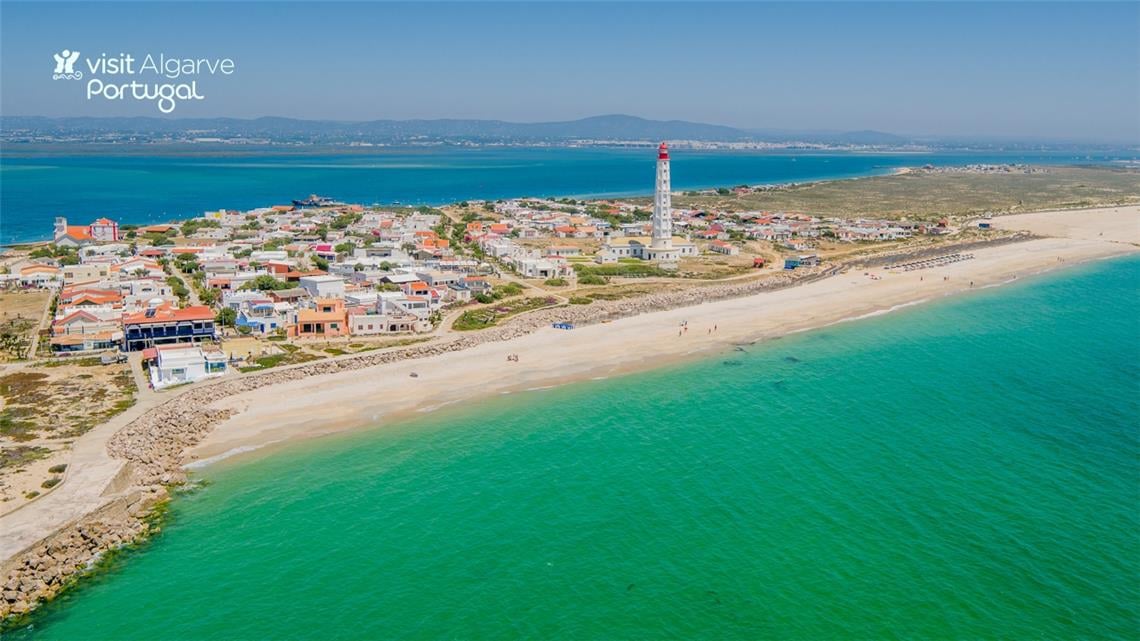
Driving Tips
As in many Portuguese towns, the older centre is made up of narrow streets that you may prefer to avoid. Park on the outskirts and wander. There is parking near the marina, and also at the Largo de São Francisco.
DAY 5: TAVIRA, THE QUEEN OF THE EAST
Tavira, often called the Queen of the Algarve, is elegant, romantic, and evocative, perfect for leisurely wandering. Sitting on both sides of the Gilão River, and washed by the Ria Formosa, the setting is beautiful. The town is intrinsically Portuguese with a more cosmopolitan vibe noticeable over recent years.
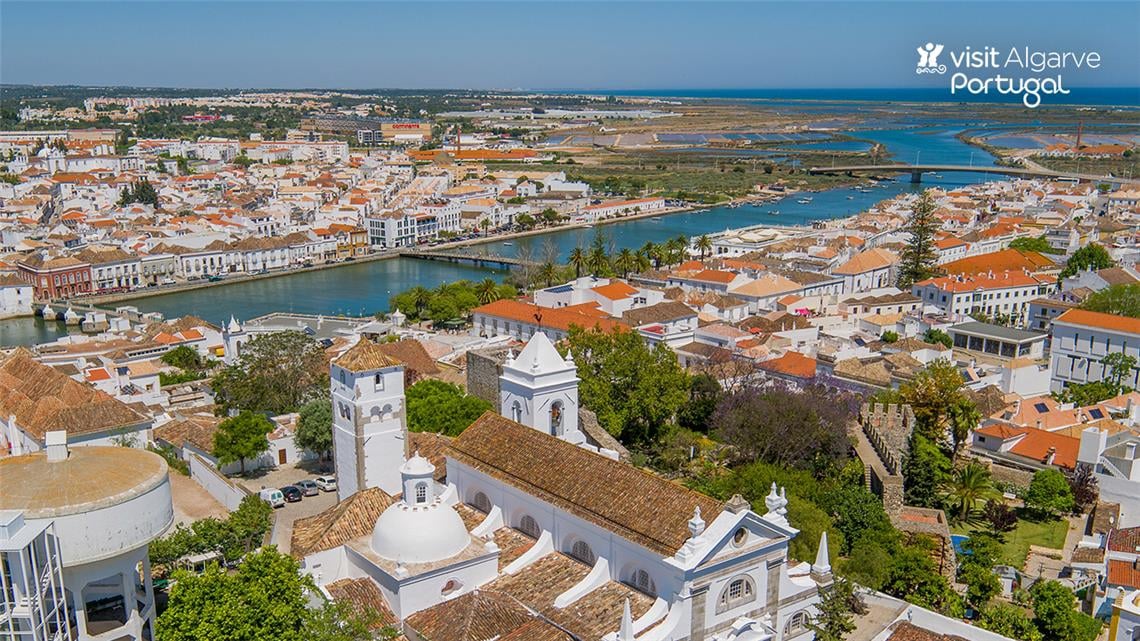
Historic Charm: Stroll the cobbled streets, admiring the pretty white-washed buildings, climbing to the top of the town where you can visit the medieval Castle, strolling in the gardens and enjoying spectacular views across the town, to the Ria Formosa. Nearby, you can see the Igreja de Misericórdia, regarded as the finest Renaissance church in the Algarve, and you can visit the Câmara Obscura which shows a 360º view of the town from its 100m elevated position.
Not to be missed is a stroll across the Roman Bridge – a seven-arched bridge spanning the Gilão river. The bridge dates from the 17th century and was most likely the site of a roman bridge.
Relax at the Praça da República, enjoying a coffee or wine, or sit in the shade at the Jardim do Coreto.
Beach time – the beaches here are amazing! And getting to them is also part of the fun, as you have to take a ferry or water taxi to many of them, as they are actually sandbanks and separate from the mainland. Visit Ilha de Tavira (boat from Quatro Estradas), Cabanas (boat from Cabanas) and Praia da Terra Estreita (boat from Santa Luzia). You can walk or take the small tourist train to Praia de Barril, known for the Anchor Cemetery, artefacts from the tuna fishing community of the past.
Gourmet dining: Tavira offers a whole range of cusines from around the world, including the Michelin star A Ver Tavira. Located by the castle, the views are as good as the food.
Take a detour: to Santa Luzia and eat octopus at Casa do Polvo. Or to the incredibly scenic hamlet of Cacela Velha.
Driving tips
Again, the old town centre streets can be narrow. There is parking by the Municipal Market and also by the skate park.
From Faro you can take the A22 highway to Tavira, then follow the EN125 which runs parallel to the coast, feeding to the various towns and villages.
Alternatively, for more rustic scenery, from Faro head to São Brás de Alportel on the N2, then take the N270 across the countryside to Tavira.
Hiring a Car
Here's everything you need to know about car hire in Portugal from what documents are required, how the tolls work and more.
Don't forget to book your car hire early to get the best rates.
Do's and Don'ts of driving in Portugal
- Always carry your rental agreement with you in the car.
- Always have a valid licence and photo ID with you.
- Seat belts must be worn in both front and back seats.
- It is compulsory to carry a red reflective warning triangle in your vehicle and a reflective vest or jacket, which is accessible without leaving the vehicle. The car hire company should supply this.
- If you're travelling with four-legged passengers, they must be restrained whilst the vehicle is moving.
- Driving is on the right in Portugal and priority is given to traffic coming from the right, unless otherwise indicated.
- The national speed limit in urban areas is 50kph.
- Outside residential areas the limit is 70 or 90kph and on the highways the limit is 120 /kph (minimum speed 40kph).
- Drinking and driving is not tolerated in Portugal - the limit is 0.5g/l, the equivalent of one small beer.
- Using a mobile phone while driving, including hands-free kits, is prohibited.


